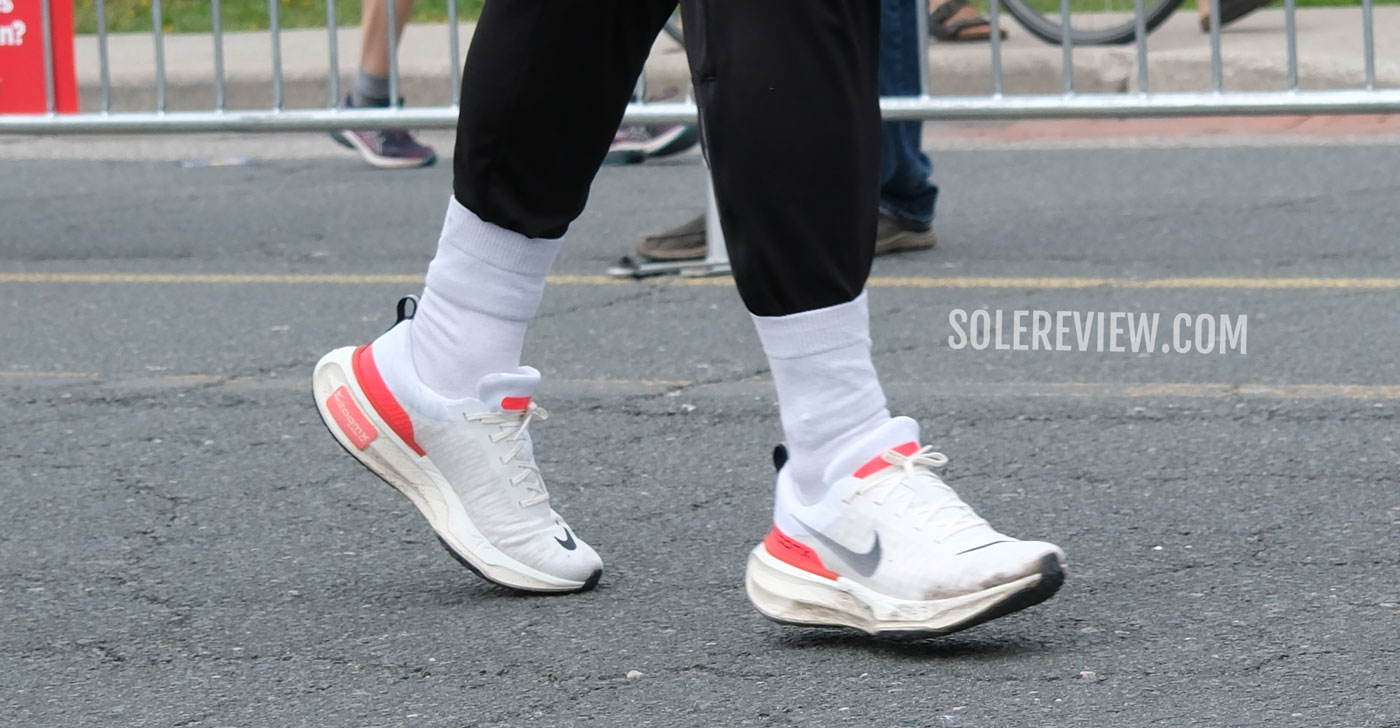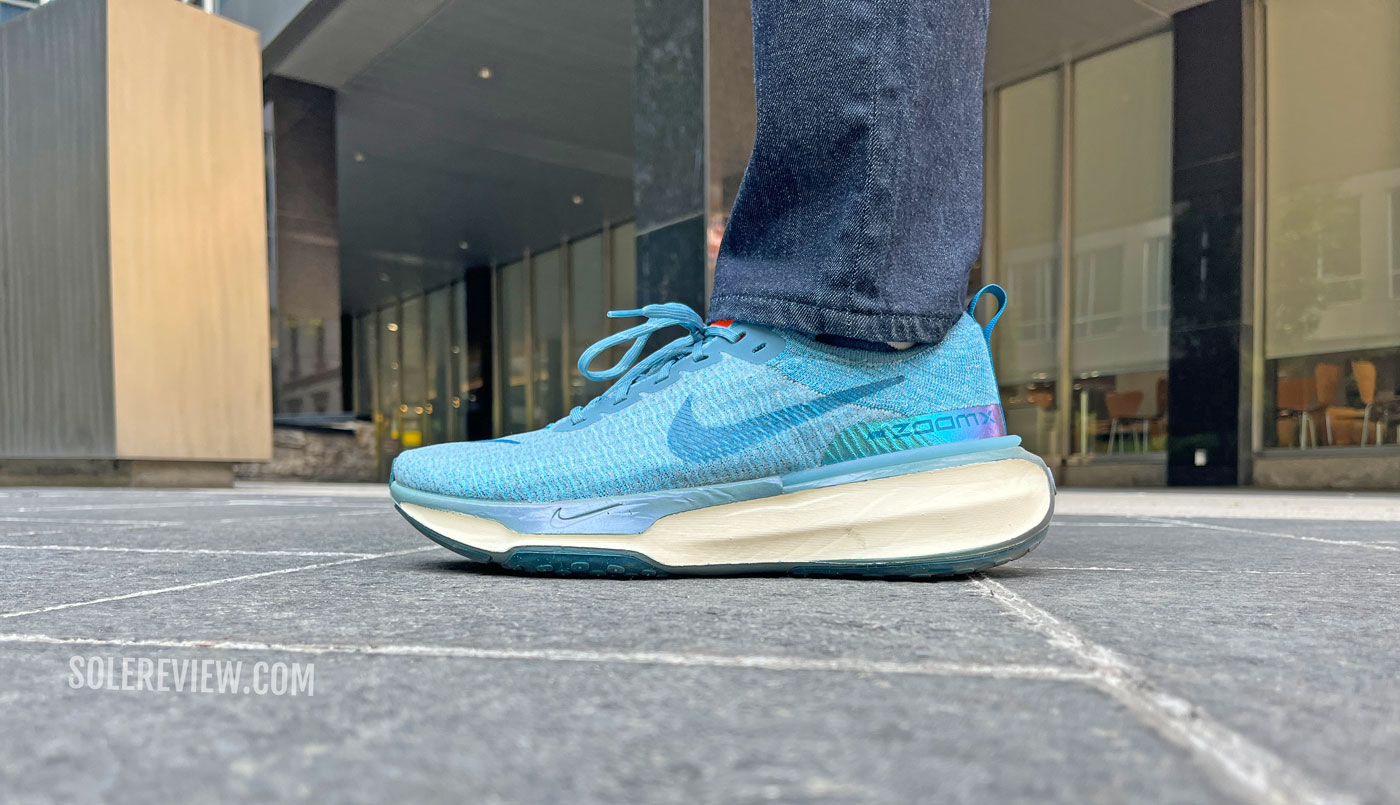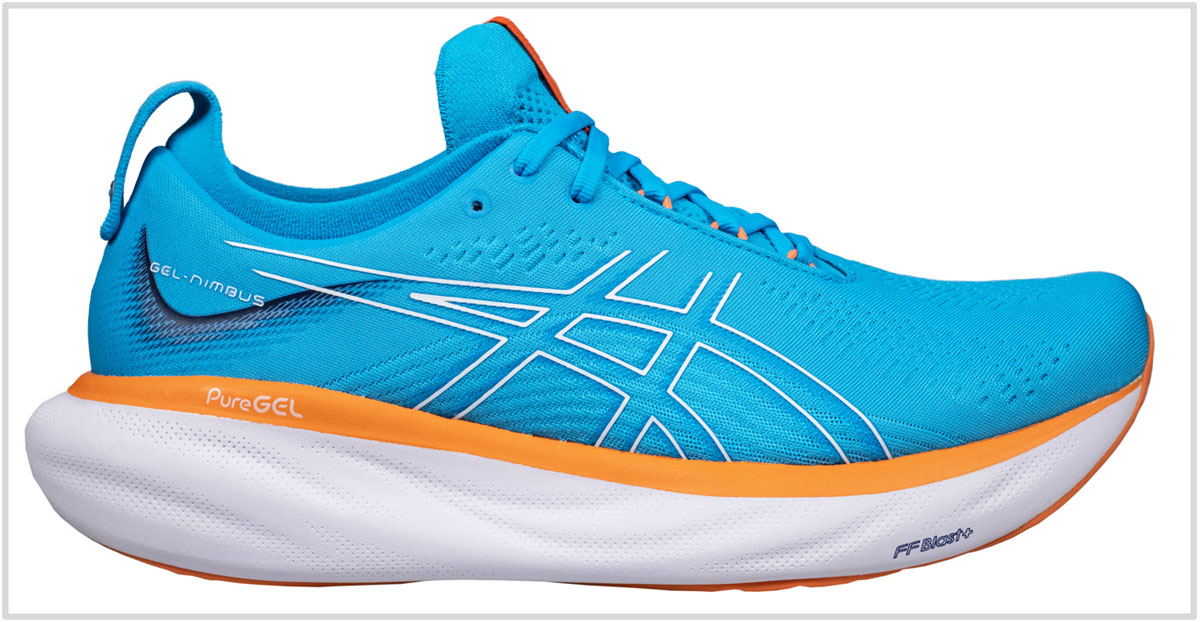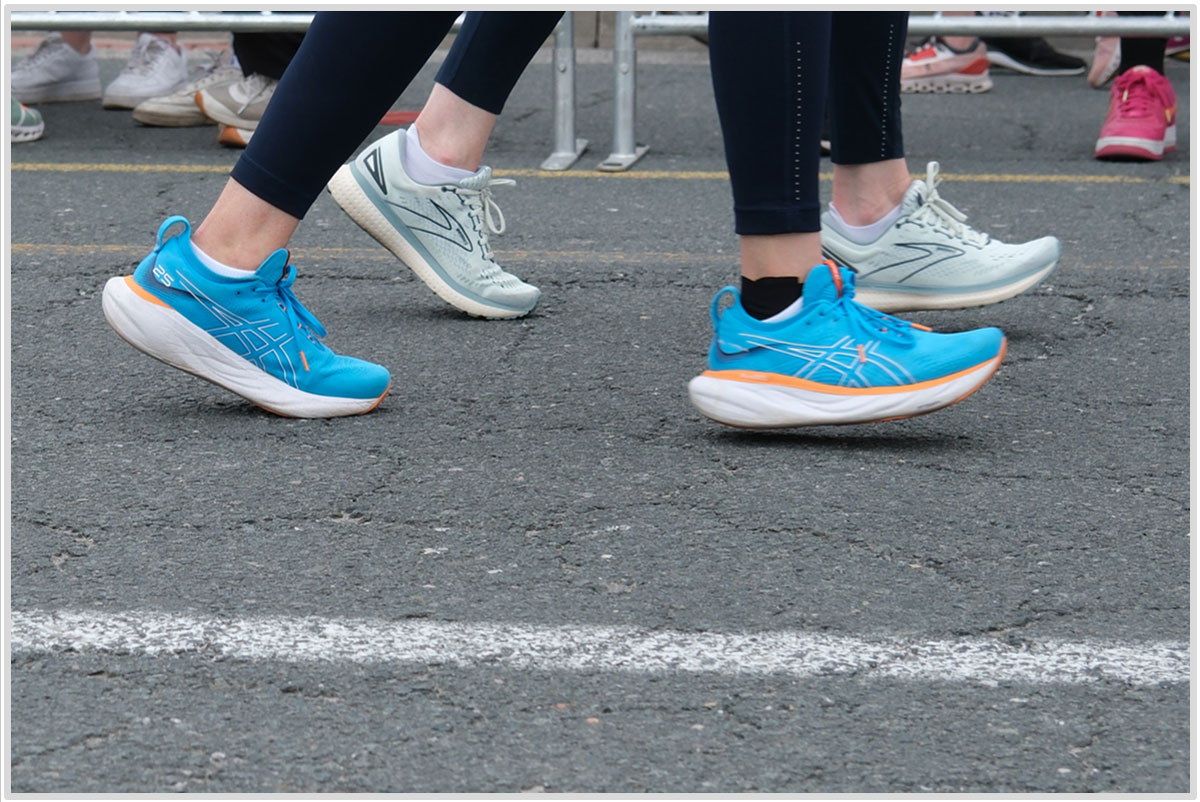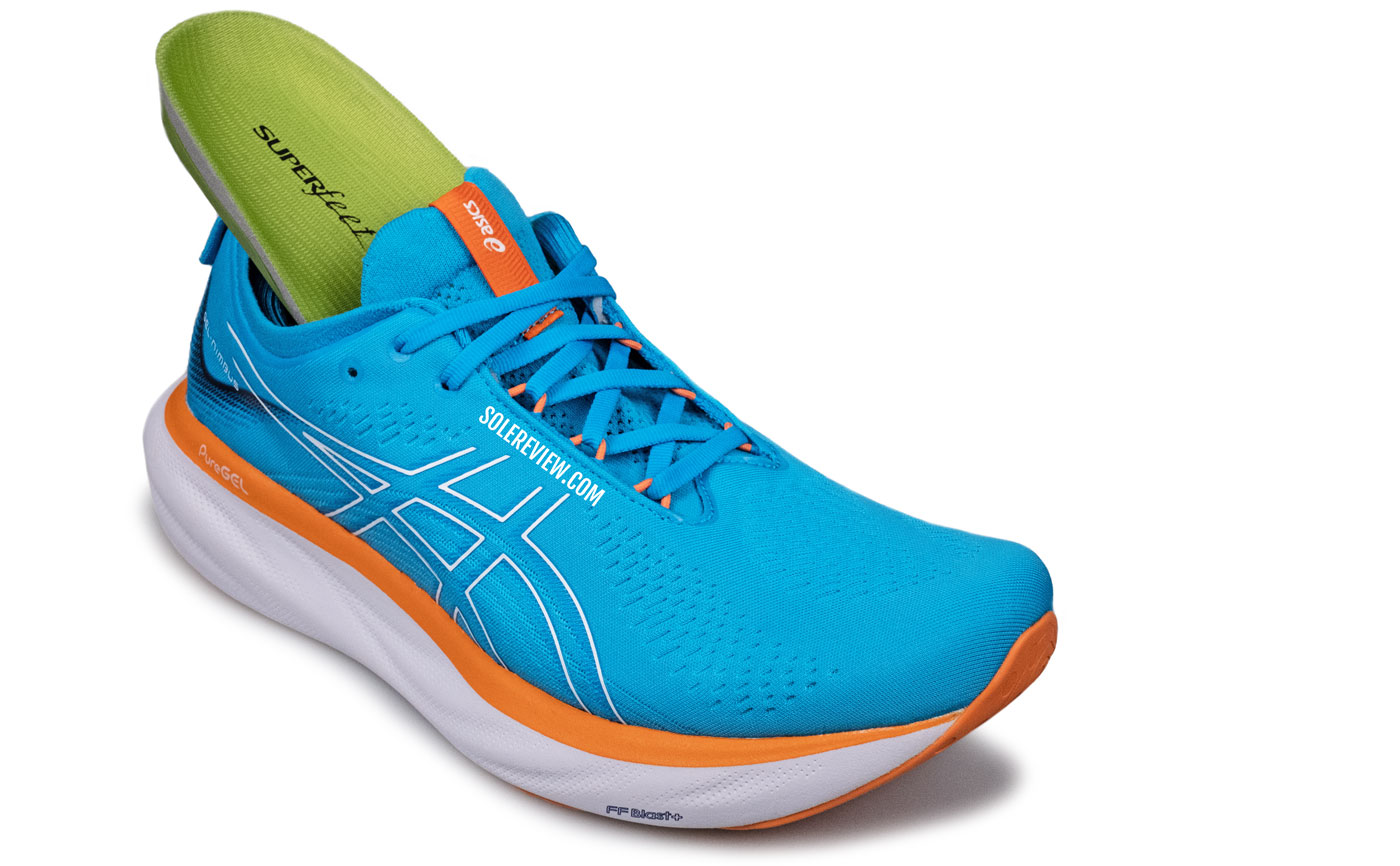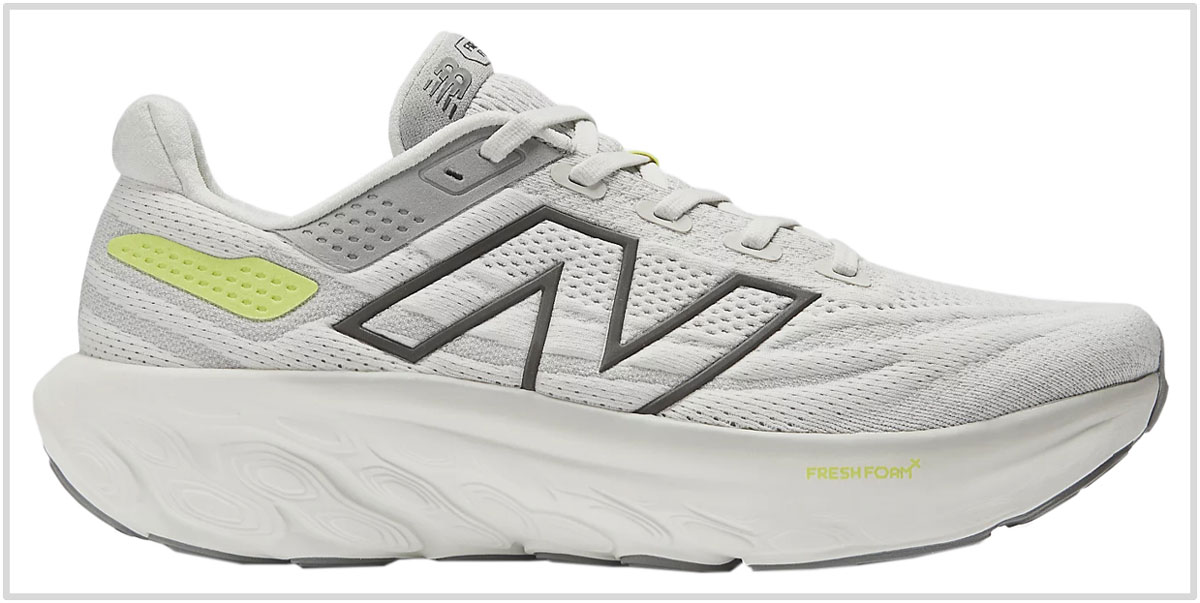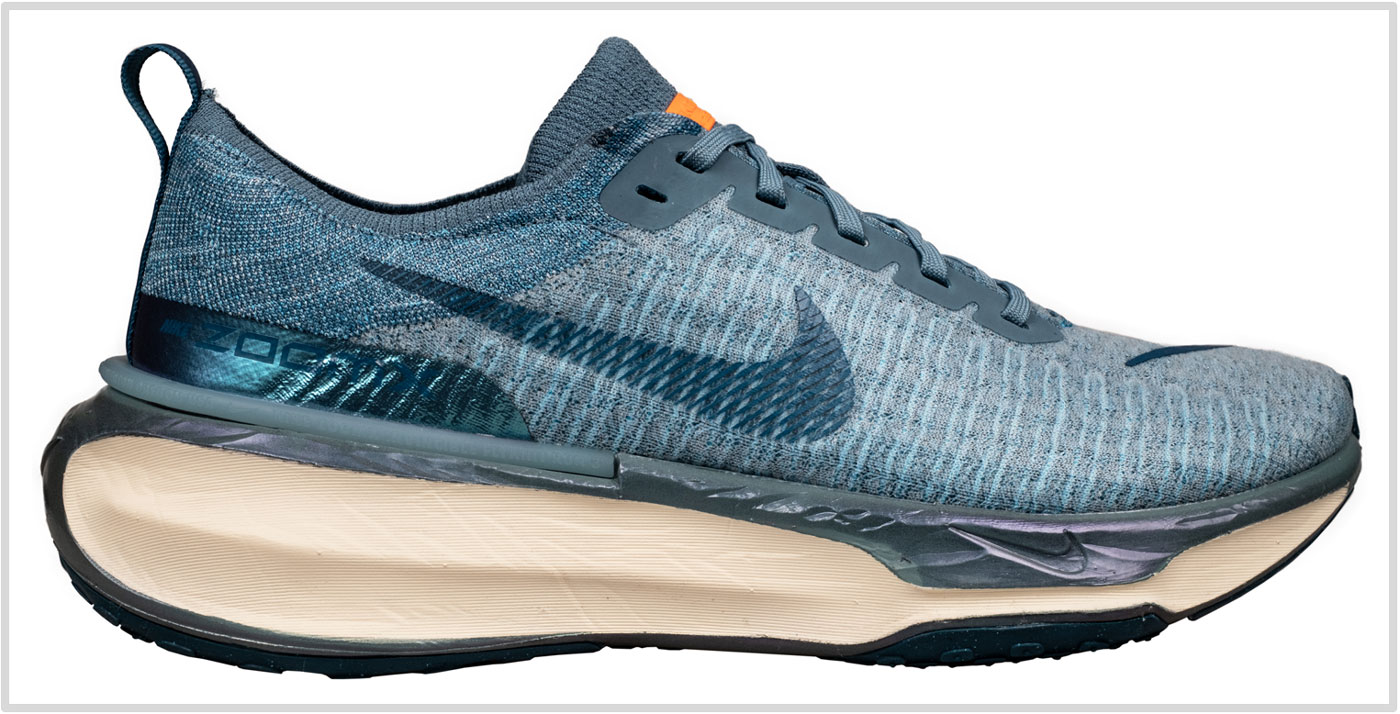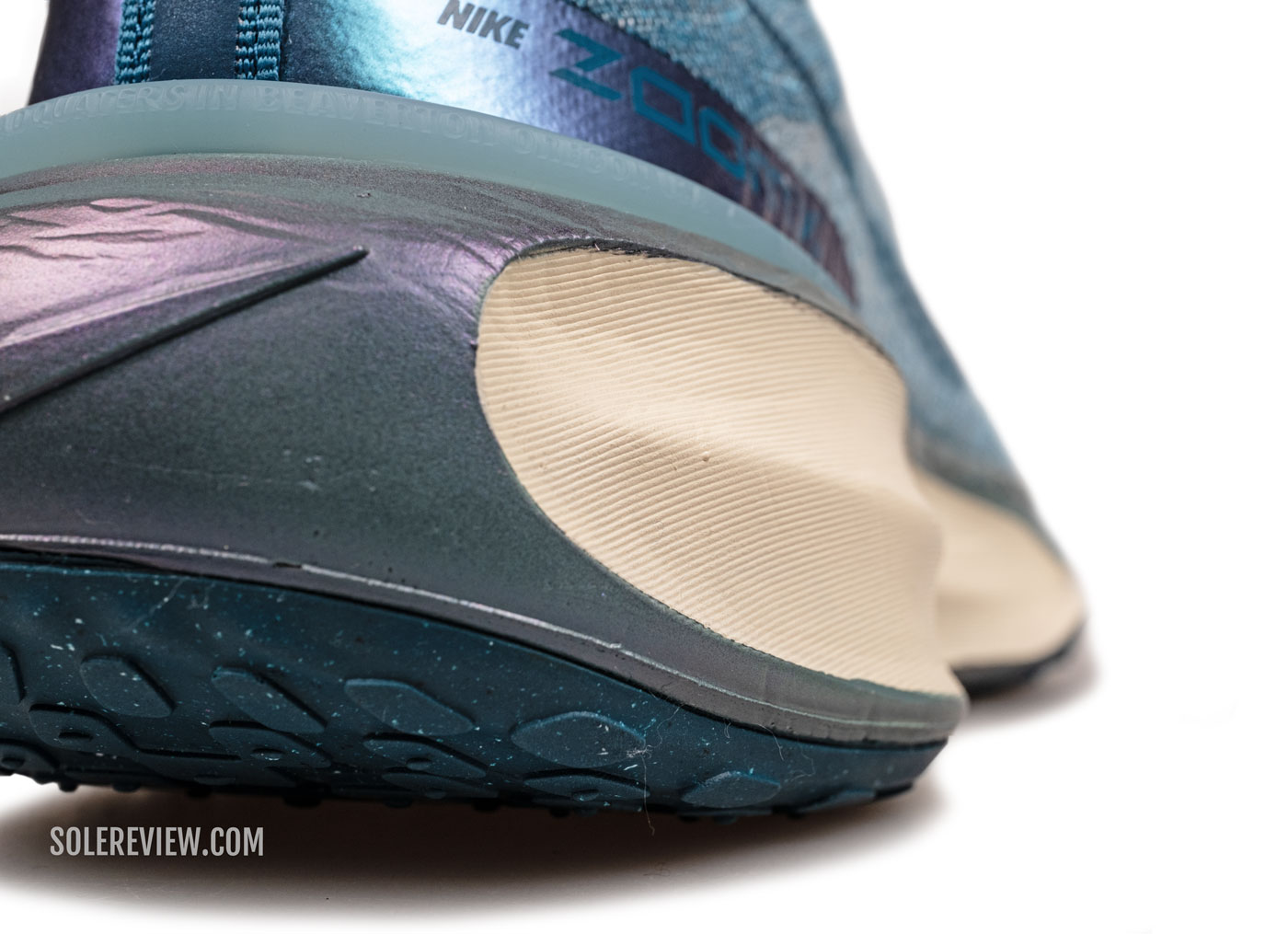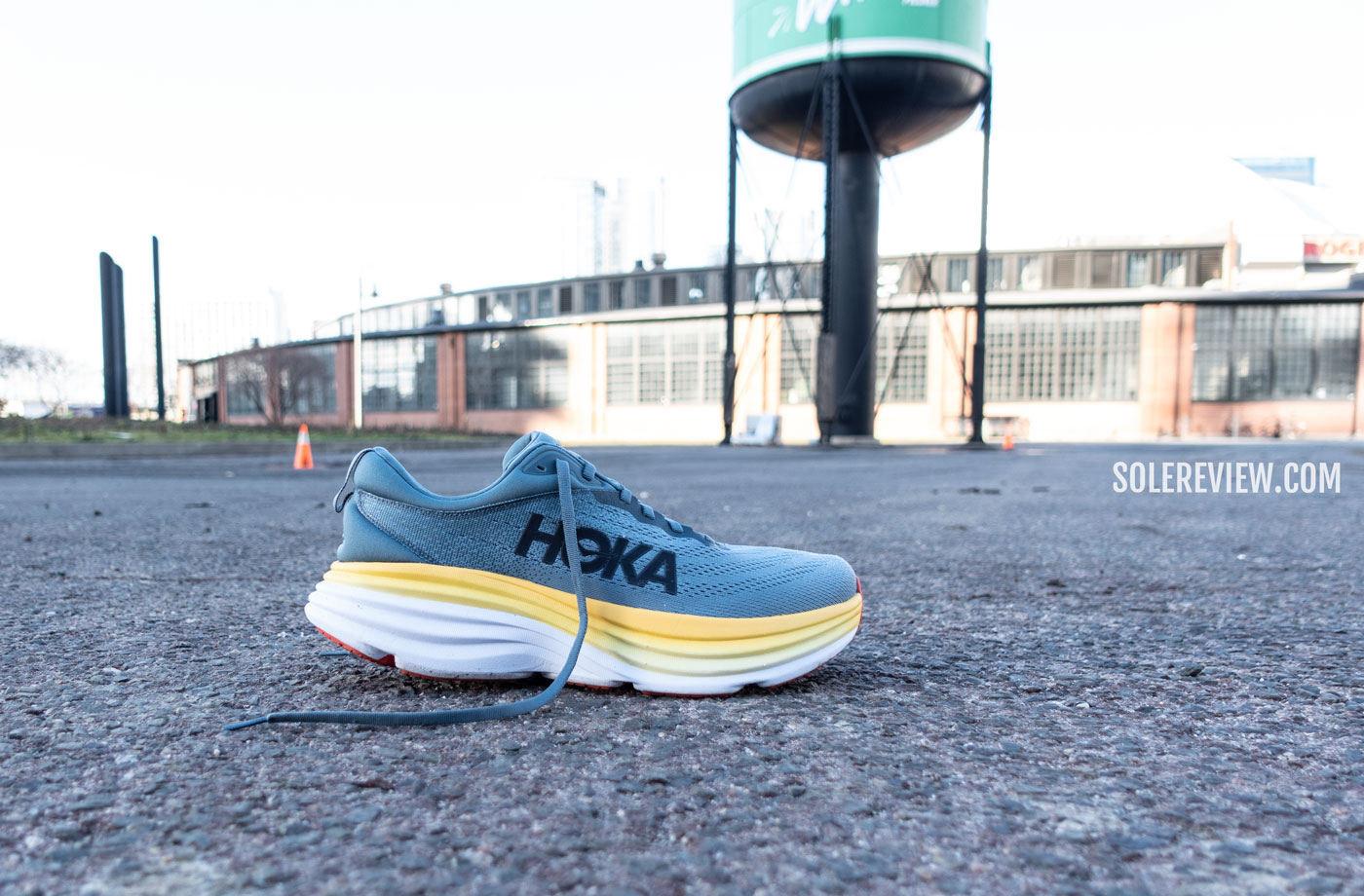This article has been updated with current models for November 2023. The New Balance 1080V12 has been replaced with its updated version. Except for the narrower ‘B’ width, the women’s models are almost identical to men’s.
In this product guide:
- 1. Factors to consider
- 2. Walking shoe with a soft ride: Asics Nimbus 25
- 3. Walking shoe with a soft ride: New Balance 1080 V13
- 4. Walking shoe with a soft ride: Asics Cumulus 25
- 5. Walking shoe with the softest ride: Nike Invincible 3
- 6. Walking shoe with a supportive ride: Hoka Bondi 8
- 7. Walking shoe with a supportive ride: Brooks Glycerin 20
- 8. Walking shoe with a supportive ride: adidas Ultraboost Light
Can running shoes be worn for walking? Sure, but not all of them. But first, it is important to understand the fundamental difference between walking and running, and how that affects the choice of footwear.
Shortly after the push-off phase of running, both of the feet are momentarily up in the air. Contrast this with walking, where both feet can be simultaneously in contact with the ground. One foot is flat on the ground while the tip of the other foot is still in contact with the road.
Hence, the transitions occur more slowly during walking as the weight loading progresses gradually from the heel to toe.
If you’re familiar with Solereview’s shoe guides, you know the drill. We first lay out the selection criteria followed by the list of recommended shoes. Here goes:
The shoe should have a beveled (angled) heel: Unlike running where people either forefoot strike or heel strike, walking involves 100% heel striking – and this isn’t optional. So an angled heel helps with smoother heel landings.

The outsole should have as much ground contact as possible: Since the weight loading happens in a very gradual way along the length of the shoe, a wide midfoot gap is undesirable. The midfoot should be bridged with rubber to provide continuous outsole coverage.
The forefoot should be flexible: Another aspect of walking is that the foot flexes more gradually than running. Hence, a stiff midsole is likely to tire the foot faster than a flexible kind – unless the midsole has a rocker shape that allows quick roll-offs.
For example, the Brooks Glycerin 20 and adidas UltraBoost Light are exceptions. The Nike Invincible 3 also gets a hall pass due to its strengths in other areas.
The shoe should have ample cushioning: If you’re going to spend long hours on your feet, the midsole needs to be comfortable.
Now, ‘cushioning’ isn’t to be conflated with softness. A shoe can be cushioned without being mushy; an overly soft shoe creates more work for your muscles and could result in tiredness.

A cushioned running shoe is usually a good walking shoe. Pictured here is the cushioned and supportive Nike Invincible 3.
The Nike Invincible 3 features on this guide because it is very soft without being mushy – the inherent responsiveness is the antidote to the ultra-soft ride.
The upper should fit and breathe well: This one’s a non-negotiable. A shoe that is either too tight or too loose is not suitable for walking. Just like running, the foot swells during long-distance walking, so there needs to be enough room for the toes to splay. Conversely, a loose upper may cause blisters if the foot slides inside the shoe.
The choice of socks is important for long walks. Avoid thick and loose-fitting socks that can gather under the foot and cause blisters. Invest in a pair of moisture-wicking socks that fit well. Most running socks match this description.
1) Asics Nimbus 25
The Nimbus 25 is the most evolved – and the cushiest Nimbus version yet. It’s a great trainer for leisurely daily runs, as well as a comfortable walking shoe. Our full review has the finer details.
Unlike the Nimbus 24, the Nimbus 25 doesn’t have a multi-density midsole. The visible ‘Gel’ pad under the heel is gone too.
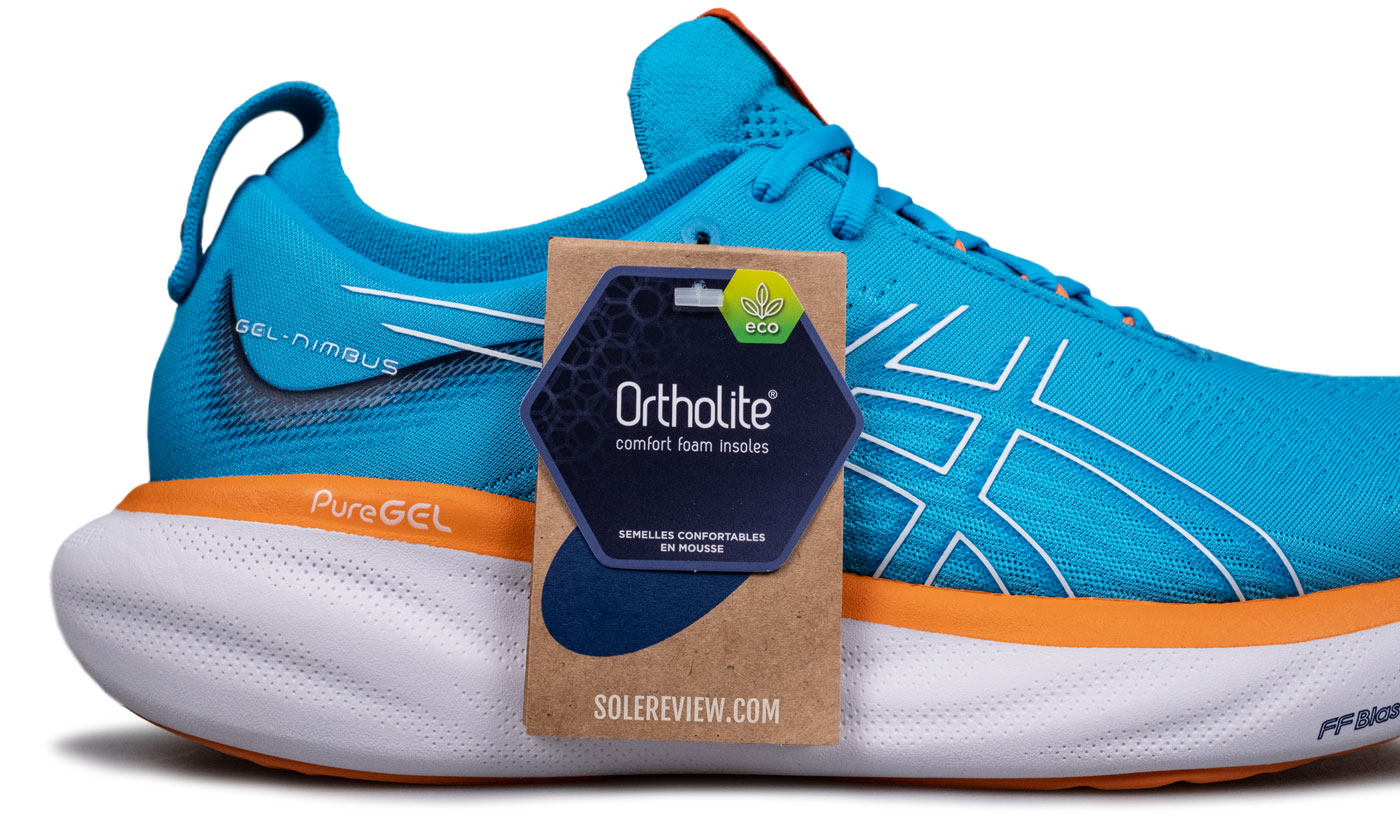
Forget what you thought you knew about the Nimbus. This is a very different shoe than the 24. But it continues to be an excellent shoe for long walks.
The latest Nimbus simplifies its midsole design by using a thick and wide stack of Flytefoam Blast. The 41.5 mm heel and 33.5 mm forefoot make it a very soft shoe, and yet the rocker-like forefoot adds a helpful ‘roll forward’ effect. This lively character was absent on the previous versions of the Nimbus.
The soft cushioning makes long walks easy on the feet; a cushy insole and lasting provide that first layer of step-in comfort. While there’s plenty of rubber outsole coverage, the lack of defined lugs means that the Nimbus 25’s traction isn’t as good as we hoped it to be.
The Nimbus 25’s upper is secure and true-to-size, but runs hotter than any of the previous models. The upper now has an elastic tongue with a gusset for a secure midfoot fit. The heel collar is very plush and delivers a secure grip.
2) New Balance Fresh Foam 1080V13
If your idea of a walk involves superior midsole plushness, then the New Balance Fresh Foam 1080 V13 is a great pick. The 1080V12 was already a great walking shoe, but the 1080V13 is so much plusher.
The 1080 has come a long way since it was reincarnated in a Fresh Foam avatar. The 1080 V13’s ride is soft as well as deeply cushioned, and that’s all one needs in a walking shoe.
It’s not mushy though, and it’s not as bouncy as the Nike Invincible Run 3. Purely from a walking use-case viewpoint, the 1080V13 is a noticeable upgrade from the 1080v12.
The outsole geometry and material also help enhance the overall cushioning. The blown rubber forefoot is both soft and grooved for gentle transitions during the walking gait cycle.
The traction isn’t bad either, so the wide forefoot and heel create a planted feel over roads and sidewalks.
The knit upper has a just-right fit with a near-seamless interior and an accommodating toe-box. Though the 1080V13 no longer uses an elastic mesh like the 1080V12, the soft mesh adds plenty of interior comfort.
3) Asics Cumulus 25
Just like the Nimbus 25, the Cumulus 25 is based on a brand-new form factor.
Asics’s popular neutral trainer no longer has visible Gel pads on the outside; it’s just foam. There’s an internal Gel pad, but it’s hidden away from sight and does not have a significant effect on the cushioning.
The midsole is made of single-density Flytefoam Blast+ and offers smooth transitions from heel to toe. The Cumulus 25 is a better walking shoe than the 24, because the new outsole has a deep transition channel that creates a better connection between the heel and the forefoot.
By switching to a mono-block midsole, the Cumulus 25’s cushioning is deeper and more comfortable than the Cumulus 24’s dual-density midsole.
The comfortable upper gets a new mesh with a texture that’s similar to the Nimbus. This is a less expensive shoe though, so the interiors do not feel as plush as the Nimbus. It’s par for the Cumulus, so the upper fits securely and true to size.
The outsole grip is somewhat of a miss, as the forefoot lugs have been replaced with the exposed midsole foam. So while the traction is decent on dry sidewalks, we don’t recommend the Cumulus 25 for walking on damp or slushy surfaces.
4) Nike Invincible 3
At the time of writing this guide, the Nike Invincible 3 is the cushiest and bounciest shoe that money can buy. Here’s our detailed review of the shoe.
The bouncy ZoomX midsole makes walking enjoyable, as the loading process happens over the deep reservoir of foam.
The wide flare and plastic heel clip add support to what is an exceptionally soft and springy midsole. The Invincible 3 also has a lasting fabric under the insole, whereas the Invincible 2 did not. The midsole sidewalls get a ‘scooped’ design, so the Invincible 3 is firmer and more stable than the Invincible 2.
The upper has a broad toe-box and is fully sleeved on the inside; this makes the fit smooth and true to size. The padded and plush heel collar cups the foot in softness.
5) Hoka Bondi 8
Here’s the catch. The Bondi 7 is a better walking shoe than the Bondi 8, so if you can snag the 7 for cheap – go for it.
That said, the Bondi 8 is still a great shoe for walking. Our detailed review of the shoe is here.
What we love about the Bondi 8 is its wide and supportive midsole that’s also deeply cushioned. The EVA foam midsole is neither too soft nor too firm, and the outsole has a full-contact design. These features make it an excellent walking shoe.
The true-to-size upper has a plush and secure fit. The Hoka Bondi 8 fits narrower than the 7 because of the slimmer midsole base, so that’s something to keep in mind.
6) Brooks Glycerin 20
Though Glycerin 20 differs greatly from the Glycerin 19, its performance as a walking shoe is equally dependable.
Unlike the Nike ZoomX Invincible, the Glycerin 20 has a medium-soft ride that’s tinged with firmness. Sure, it is cushioned but in a supportive way. Our detailed review dives deep into the Glycerin 20’s on-road behavior.
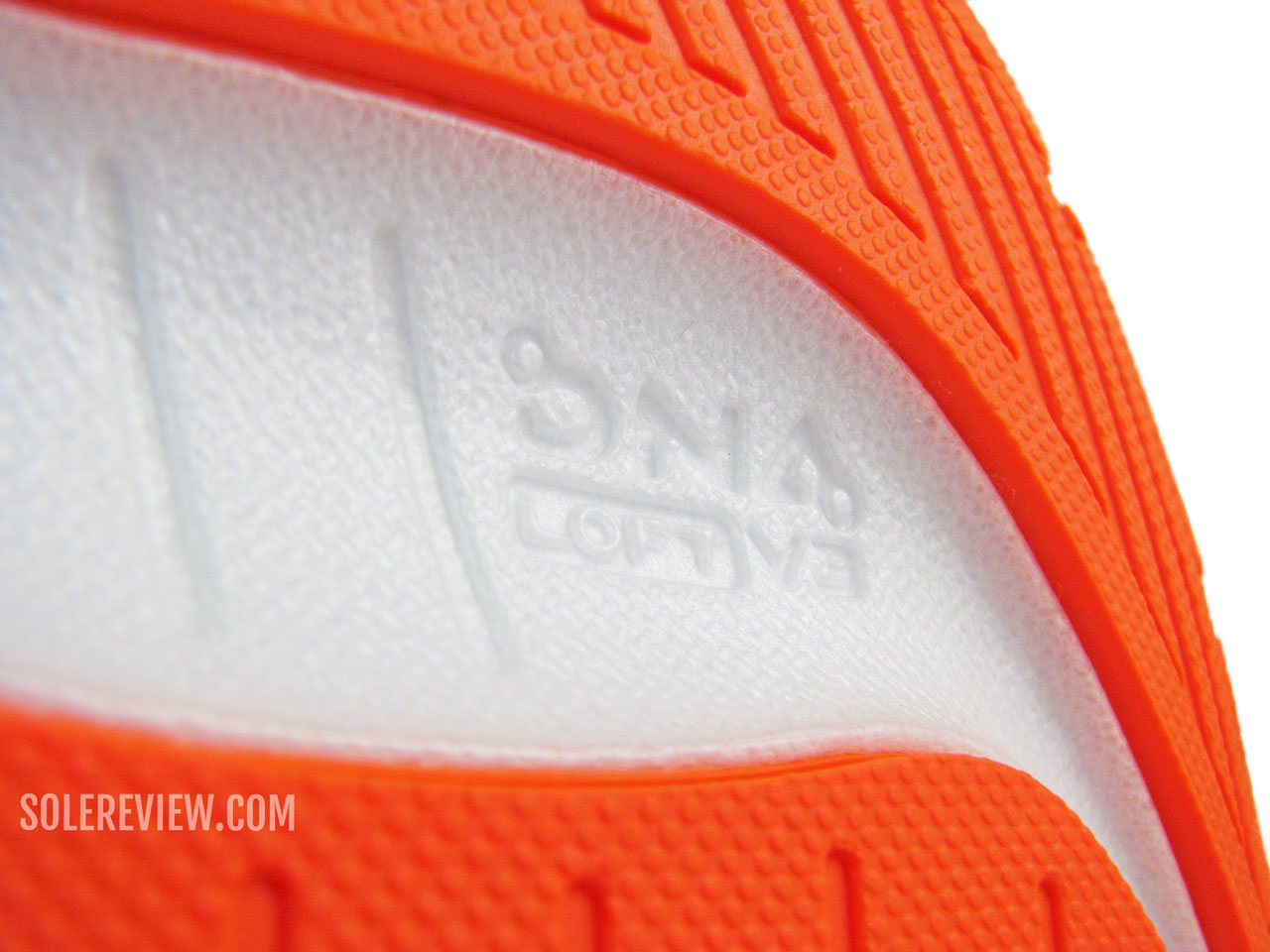
The DNA Loft V3 foam isn’t super soft. But as a whole, the supportive midsole is great for walking. The transition groove is also a walking-friendly feature.

The DNA Loft V3 appears to be an EVA blend foam that is blown with Nitrogen. That’s what the tiny bubbles are.
And yes, the redesigned midsole has a fancy Nitrogen-infused ‘DNA Loft V3’ midsole, but that doesn’t alter its walking-friendly character.
This balance of cushioning results in a stable yet comfortable platform for walking. The outsole has decent traction and is generously grooved for connected transitions.

Unlike the past models, the Glycerin 20’s tongue lacks a sleeve. That said, the upper is extremely comfortable for walking.

The padded heel and tongue create a plush feel; the upper fits true to size. It has more space than the Glycerin 19 due to the removal of the full sleeve, and the ventilation is better.
Just know that the Glycerin 20 also sells in ‘GTS’ and ‘Stealthfit’ versions. Of all three, we prefer the standard Glycerin 20 because of the better upper fit.
7) adidas UltraBoost Light
The Ultraboost has always been a walk-worthy running shoe with lots of underfoot comfort, and the Ultraboost Light offers much of the same.
The forefoot core uses a softer rubber whereas the rest of the outsole is hard rubber. A plastic Torsion (LEP) shank adds stiffness under the midfoot and forefoot; this helps with the forward rolling movement.
The absence of gaps on the outsole contact areas also favors walking.
On the upper, the floating midfoot cage keeps the foot supported. The knit upper is soft and fits true to size. The toe-box is shallow – something that has been a part of the Ultraboost since its inception.
Do you own any of these shoes? Improve this review by sharing your insights – submit a review here.

